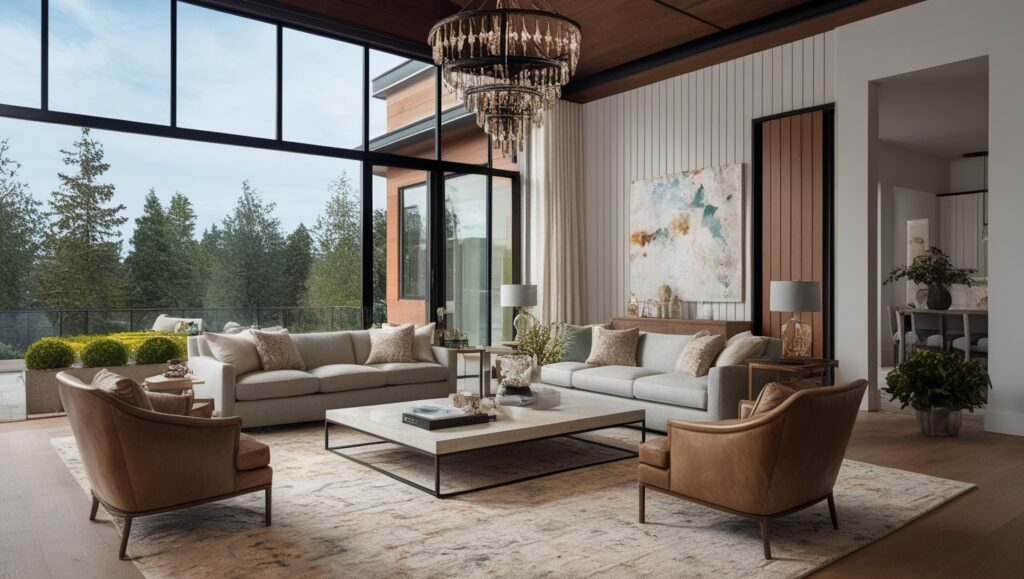
When Emma and her partner decided to renovate their aging colonial-style home, they thought the hardest part would be choosing paint colors or tile patterns. But they were in for a surprise. What looked like a simple refresh became a layered web of costs: drywall patching, siding replacements, crown molding, exterior stucco repairs, and more. Their biggest challenge? Accurately estimating the interior and exterior finishes to keep the project within budget.
Like many homeowners and builders, they soon discovered that finishes—though seemingly cosmetic—often account for a significant chunk of total construction costs. That’s where a professional Interior & Exterior Finishes Estimating Service can make all the difference by offering clarity, control, and cost-efficiency from the start.
The True Value of Interior and Exterior Finishes
Interior and exterior finishes aren’t just aesthetic—they serve functional and protective purposes. Interior finishes like drywall, baseboards, trim, paint, and flooring define the space’s personality. Exterior finishes such as siding, stucco, cladding, and exterior paint protect the building envelope from weather and wear.
Both require strategic planning, skilled labor, and accurate quantity takeoffs to avoid overspending and underperformance. Underestimating these finishes can derail a budget quickly, while overestimating can lead to unnecessary expenses and material waste.
Key Components of Interior Finish Estimates
1. Wall & Ceiling Finishes
Drywall installation, plaster, paneling, or decorative ceilings all fall under this category. Estimating these requires understanding square footage, the number of rooms, and any architectural features that may increase labor.
2. Paint & Coatings
Interior painting costs vary depending on surface area, number of coats, and whether primers or specialty finishes are used. Detailed estimates ensure accurate gallon counts and application timelines.
3. Trim, Baseboards & Moldings
These decorative yet functional features require precision. Estimating includes linear footage, mitered corners, and specific trim profiles, all of which influence labor and material costs.
4. Flooring Finishes
From tiles to hardwood and laminate, interior flooring must be calculated room by room, including transitions, patterns, and potential wastage for cuts and irregular spaces.
Key Components of Exterior Finish Estimates
1. Wall Cladding & Siding
Exterior cladding materials range from vinyl and fiber cement to natural stone and wood. Estimating these requires accounting for windows, doors, soffits, and trim-outs.
2. Stucco & Masonry Finishes
These finishes add texture and durability. Proper estimation includes scaffolding, curing times, multiple coats, and detail work around structural openings.
3. Exterior Paint or Sealants
Paint or sealant not only adds color but also protects from UV and moisture damage. Accurate estimations are critical to cover vertical surfaces, eaves, trims, and accents.
4. Decorative Exterior Elements
Shutters, columns, fascia boards, or porch details might seem minor but can significantly impact costs. Their size, placement, and finishing style must all be considered.
Factors That Impact Finish Estimation Costs
Several variables affect the pricing and scope of both interior and exterior finishes:
-
Material Selection: Premium materials drive costs up while lower-tier options may be more budget-friendly but less durable.
-
Labor Availability: Skilled finishers are often in demand. Labor costs vary by region, time of year, and project complexity.
-
Design Complexity: Homes with detailed cornices, layered trim, or intricate exterior profiles require more time and precision, increasing labor and waste.
-
Weather & Timing: For exterior finishes, weather conditions can delay work or require special treatments, adding to the budget.
-
Site Conditions: Poor site access, existing damage, or structural repairs can complicate finish work and lead to unforeseen costs.
Why Professional Estimating Matters
Relying on rough guesses or outdated pricing models can quickly sabotage a project. Here’s where an expert Interior & Exterior Finishes Estimating Service becomes essential:
-
Accurate Material Takeoffs: No more under-buying or excess waste
-
Real-Time Cost Insights: Based on current labor and material rates
-
Detailed Scope Definition: Prevents scope creep and clarifies deliverables
-
Timeline Planning: Aligns labor schedules with delivery and weather conditions
-
Budget Confidence: Gives homeowners and contractors peace of mind
Professional estimators not only crunch the numbers—they help you avoid the pitfalls.
Common Mistakes to Avoid in Finish Estimation
Even seasoned builders can make costly errors in finish estimating. Here are some common missteps:
-
Ignoring Surface Prep: Sanding, priming, or repairing walls before finishing is often overlooked.
-
Overlooking Waste Factors: Especially in patterned tile or trim work.
-
Skipping Labor Variables: Different finishes require different skill levels and timelines.
-
Assuming Uniform Coverage: Paint and coating coverage depends on material porosity, previous layers, and technique.
-
Failure to Review Specs: If finish specifications change mid-project, the estimate may no longer be valid.
A Real-World Scenario: Lessons Learned
Emma and her partner initially budgeted $15,000 for all finishes based on a rough square footage rate. But after working with an estimator, they discovered they’d overlooked several key costs:
-
Specialty trim in three rooms
-
Moisture-resistant paint in bathrooms
-
Repainting the home’s weathered siding
-
Adding decorative stonework on the exterior porch
Their adjusted estimate was $21,500. Though it was more than expected, the detailed breakdown helped them avoid future budget overruns and make informed design decisions.
Practical Tips for Better Finish Estimating
-
Request Itemized Estimates: Always break down materials, labor, and waste factors.
-
Get Material Samples: See the difference in finish quality before committing.
-
Plan for Contingency: Set aside 10–15% extra for unexpected adjustments.
-
Schedule Finish Work Strategically: Interior finishes should follow mechanical and framing phases, while exterior finishes depend on weather.
-
Review and Update Estimates Frequently: Especially if your project extends over several months.
Conclusion
Interior and exterior finishes are the visual and tactile elements that define your building. They’re also among the most overlooked during the early budgeting phase. Understanding the true scope of these finishes—and estimating them accurately—can make or break your project’s success.
Whether you’re remodelling a single room or constructing a new home from the ground up, a detailed estimate from a professional service helps you build with confidence. The beauty of your finishes should reflect not just your style, but smart, strategic planning.
